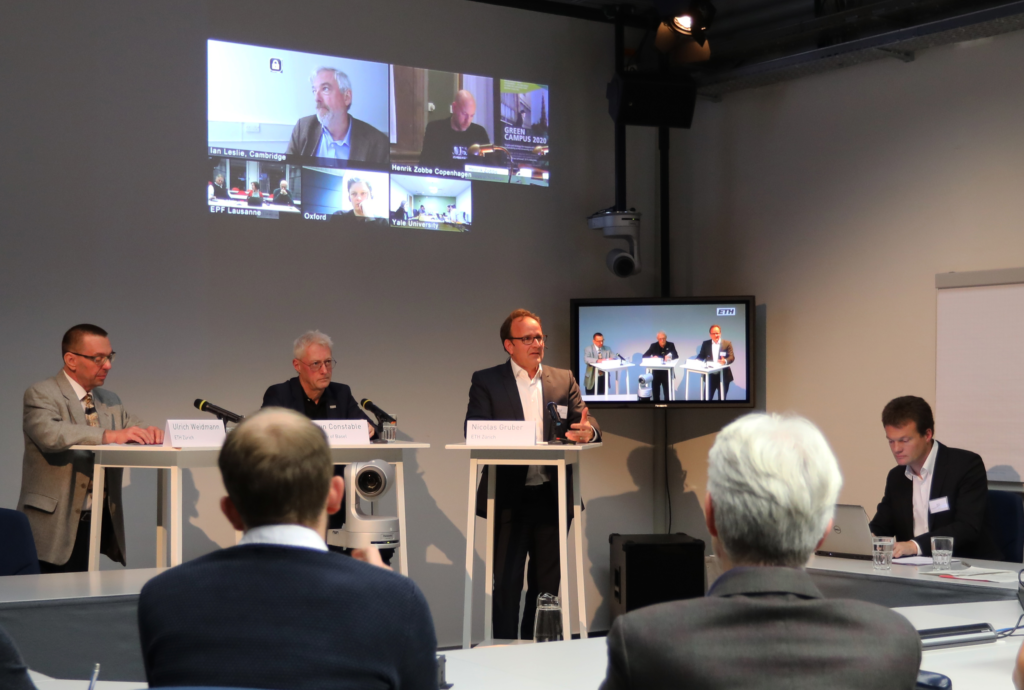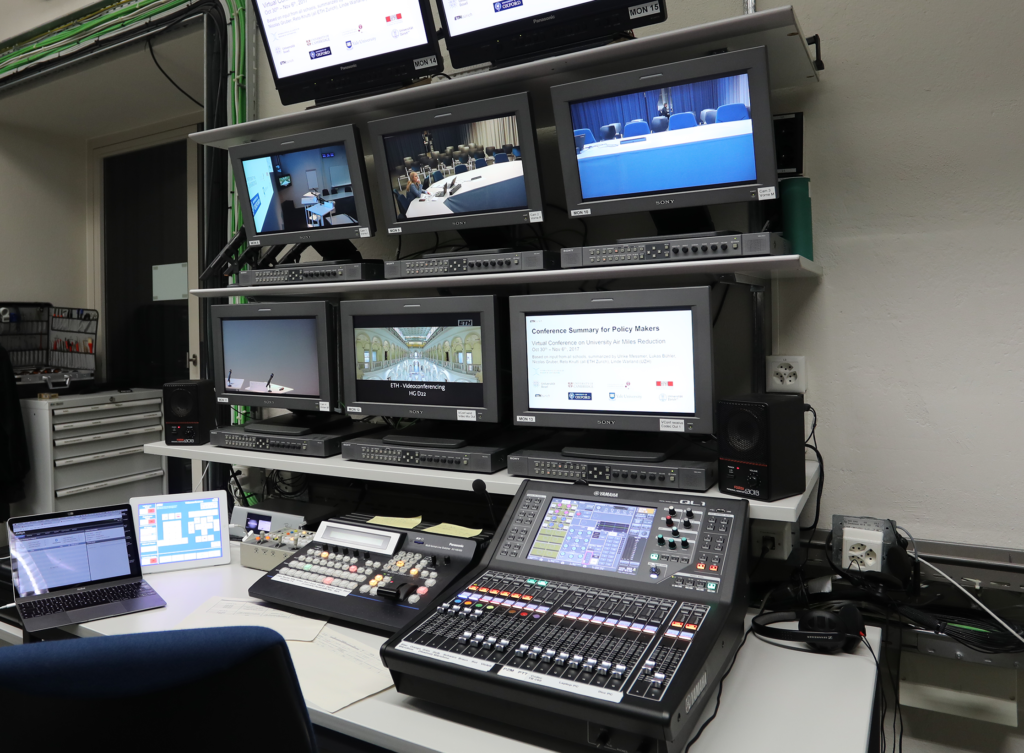Virtual Conferences with ITS MMS
ETH Zurich’s contribution to the fight against climate change is not limited to just research. The organisation’s own contribution to global warming is also being discussed, analysed, and reduced wherever possible. Sustainability is becoming the premise for all action, be it in the field of buildings, food, or energy use in a narrower sense.
The role of business air travel
However, ETH has yet to address the major part of CO2 emissions they cause in the area of transport in as much detail. Air travel by ETH staff makes up around 60% of the total. The core issue is the often-satirised paradox that every climate conference constitutes a significant climate impact through the air travel of its participants. That raises the question of how to hold today’s scientific events with less air travel, or even none at all. But communication and collaboration among researchers should not be significantly limited.
Virtual conferences as an alternative?
In this area too, ETH Zurich is increasingly looking for solutions, first of all through a decentralised or participatory approach, as is typical for ETH: The departments themselves are setting goals for reducing air travel. At the same time, this involves testing effective alternatives to scientific events requiring air travel. Thus, in the autumn of 2017, within the framework of the IARU, a «Virtual Conference» took place with the help of Multimedia Services, specifically the Videoconferencing & Collaboration group.
The video conference as a possible solution
This already offers various solutions for location-independent communication: Video conferences for small as well as very large groups,
in the lecture hall,
in one of ETH’s video-conference studios, or in a conference room. Here it is possible to connect one or more locations, and transmit picture and sound, as well as presentations and other content.
And that perfectly matched the requirements for a virtual conference, which needs to connect different places within ETH with different places outside of ETH, in different configurations and group sizes. And that was also thanks to good planning, preparation, and implementation not only through MMS VC, orchestrated from the HG D21 Video Conference Studio:
The quality of the broadcasts, especially over the long duration of such a conference, is of crucial importance. Only if video and audio are available in excellent quality is the subjective experience comparable to that at a «normal» conference. And an exchange of knowledge is only possible when it meets the requirements of the scientists.
Virtual Conference
This is also where the problems of the virtual conference were: The high quality of ETH’s video-conferencing infrastructure could not be maintained at all locations, so there were both acoustic and visual «failures», although they were only temporary. The situation confirmed an old rule of video conferences, that those with the best transmission quality generally have the worst reception quality.
But overall, the people involved were satisfied with the process and the quality, and Multimedia Services also reached a positive conclusion. Infrastructure, personnel, and thus the service as a whole were able to satisfy these customers› high expectations. This marks a first step towards more climate-friendly conferences, with many more to follow.
Contact
IT Services, ITS Multimedia Services, Christopher Sauder
erstellt am
in News





